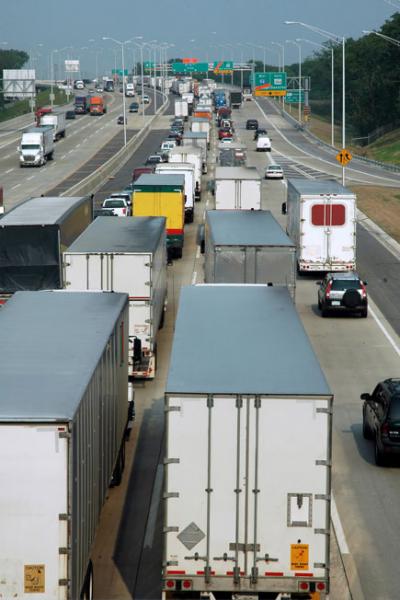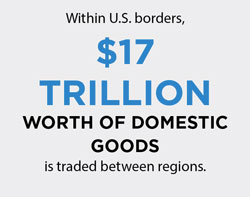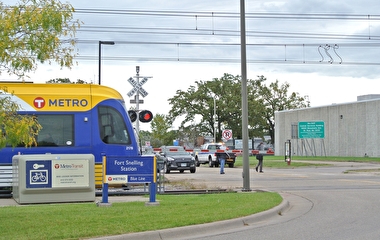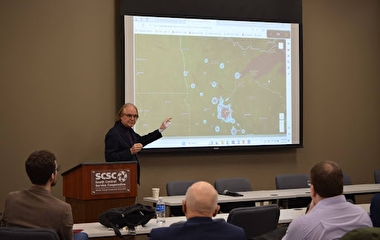thousands of miles away. Photo: Shutterstock
Today’s global economy is fast-moving and more competitive than ever—and more metropolitan-centered than ever. Metropolitan leaders, along with their state and federal peers, must begin to “design policies to address the new reality of the modern metropolis,” said Adie Tomer, the keynote speaker at the 18th Annual Freight and Logistics Symposium.
Leaders and experts from all walks of transportation discussed this new logistics reality and other challenges and opportunities at the December event in Minneapolis.
National trade statistics generally look only at how the U.S. trades with other countries, said Tomer, a fellow at the Brookings Institution Metropolitan Policy Program. “When an airplane built in Seattle by Boeing is sold to Delta Airlines in Atlanta…we can’t see that anywhere in our trade statistics.”
Trade concentrates in large metropolitan areas: 80 percent of traded value starts or ends in them. Without a full understanding of how these trade networks work together, leaders in both the public and private sectors cannot develop targeted freight strategies and transportation investments to support the extensive supply chains that underpin the U.S. economy, Tomer said.
In its Metro Freight research series, Brookings Institution researchers addressed these data deficiencies. Their findings help better explain how communities relate to each other and what their freight needs might be moving forward, Tomer said, and help drive home the importance of trade in economic terms.
Large cities—home to the bulk of economic activity—are also where most traffic congestion occurs. Congestion in one market can hurt regions hundreds or even thousands of miles away. And the problem will only get worse, Tomer predicted. The Brookings research indicates that urban trucking is continuing to grow, directly coinciding with the rise of e-commerce and the use of digital communications to manage shipping.
Other speakers discussed new federal law and state policies. The Fixing America’s Surface Transportation Act (FAST Act), signed in December 2015, establishes both formula and discretionary grant programs to fund critical transportation projects designed to benefit freight movements.
“The FAST Act has a lot of ingredients many of us have been advocating for, for many years,” said Bill Gardner, director of the Office of Freight and Commercial Vehicle Operations at the Minnesota Department of Transportation (MnDOT). “There is dedicated freight funding that I think is a game changer.”
Gardner also reported on Minnesota’s recently updated statewide freight system plan, which provides a new policy framework and strategies to guide planning and investment in various transportation modes. The action agenda will drive freight system improvements for the next 5 to 10 years.
Panelists then discussed implementation of the plan. Tim Henkel, assistant commissioner of modal planning and program management at MnDOT, said all infrastructure is rapidly aging, so serious discussion is needed about revenues. Without that conversation, MnDOT will be able only to preserve the system and unable to tackle the many strategies in the action agenda. Senator Scott Dibble agreed, adding that such a dialog will be necessary for government leaders to respond with tangible policy changes and projects.
The symposium was sponsored by CTS in cooperation with MnDOT, the Minnesota Freight Advisory Committee, the Council of Supply Chain Management Professionals, the Metropolitan Council, and the Transportation Club of Minneapolis and St. Paul. A proceedings summarizing all the sessions is now available on the event web page.




